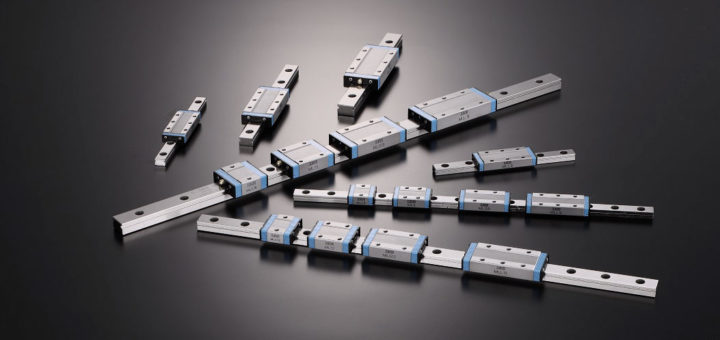Automation can provide a host of benefits for the life science industry. Researchers and technicians can perform more tests and experiments in less time while eliminating repetitive tasks, which minimizes the risk of human error and lowers costs. But fast-paced automated instruments and robots rely on precise, reliable motion. Whether you’re designing a lab robot or an instrument that positions samples or moves optical components, your motion devices will have to address many challenges in life science applications, such as:
- Accuracy. Machines used to study cells or sequence DNA must move samples of molecular materials with precision.
- Repeatability. Repetition is an important factor in automated life science processes. In fact, researchers need consistent test results, so repeatability is critical.
- Smooth operation. Lab automation systems and robots can’t afford to have irregular or erratic motion, especially when handling molecular-sized samples, so smooth motion is very important
- Small size. As life science instruments become smaller, designers have less space to accommodate motion devices. They need to find compact solutions.
- Easy maintenance. Repetitive processes in commercial laboratories can punish bearings and threaten their long life. Maintaining proper lubrication on small bearings housed inside tight instruments must be easy and efficient.
- Special environments. In many cases, life science instruments are used in sterile or clean room environments, so motion devices need to be corrosion and rust resistant to stand up to these conditions.
IKO International offers a broad range of motion devices that address the demands of the automated laboratory. Just recently, some innovative life science companies have implemented IKO linear bearings, crossed roller bearings and actuators into their cutting-edge sequencing systems and platforms. Here are some examples of IKO products that can meet specific life science needs.
- Precise, accurate and smooth linear guides. Many styles are available to meet most life science application requirements while reducing friction and maintenance costs and maximizing precision and life. For example, IKO’s CRW Series combines high accuracy with smooth linear motion thanks to its precisely finished raceways and non-recirculating type linear motion guide and it is also available in corrosion-resistant stainless steel. CRWG versions have a specially designed rack and pinion mechanism built in to solve cage creep issues. MX Series linear guides feature an extremely rigid guide rail to deliver high rigidity, high accuracy and smooth motion that can improve the performance of the systems they are used in.
- Miniature linear motion products. IKO offers some of the smallest commercially available miniature linear bearings, with sizes as small as one millimeter. ML/LWL linear guides make four points of contact in each of the two rows of balls to provide stable and accurate motion. IKO’s miniature series are made of stainless steel which makes them suitable for clean room applications. As an added performance feature, maintenance-free versions that provide long-term lubrication are also available for most sizes. In addition, miniature linear motion products can provide a low, uniform sliding resistance over their travel distance to ensure smooth operation.
- Crossed roller bearings for complex lab robots. Many of our crossed roller bearings are designed to fit into small mechanisms like articulating arms that position and rotate objects in the lab. Super slim CRBT Series crossed roller bearings measure just 5.5 millimeters in sectional height and five millimeters in width to meet machine downsizing and light-weight requirements. Separators between the cylindrical rollers provide smooth rotation.
- Compact, accurate positioning tables. The compact TU Series positioning tables feature both high accuracy and high rigidity, even under fluctuating and complex loads. TE Series tables are compact, lightweight and low profile with 40 percent less mass than the standard TU Series. The TE Series offers repeatability as low as ±0.002 millimeters, and a minimum positioning accuracy of 0.035 millimeters. TC Series are made of high-tension aluminum alloy and stainless steel providing excellent corrosion-resistance and making them ideal for clean room environments, compatible with class 3 cleanliness. Each of these actuators are also available with C-Lube, which provides long-term, maintenance-free operation.
- Long-term maintenance free products. Maintaining proper lubrication in smaller components and machinery is difficult because they have areas that are hard to reach. IKO solves this problem by offering C-Lube technology in many of their products. C-Lube uses capillary action to provide long lasting, maintenance-free operation.
- High-performance materials and coatings. Many IKO products, including miniature linear guides, are available with stainless steel construction for use in moisture-sensitive or clean room environments. Corrosion-resistant coatings add an extra degree of protection for guide rails and housings. A special grade of nonmagnetic steel is also available for use in areas that are sensitive to magnetic fields such as certain medical equipment.
Keep Your Devices at the Forefront of Research
Life science applications place high demands on motion devices. Not only must they provide accurate, repeatable motion to support automated, repetitive tasks, they must reside within streamlined instruments — sometimes in clean room lab environments. And along with increased efficiency demands, motion products have to be reliable and easy to maintain. IKO products address these needs so your lab instrument or robot will operate with the reliability and efficiency necessary to be on the forefront in advancing vital research for the future.
For more information about IKO motion devices, visit www.ikont.com.



